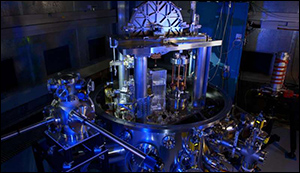Important milestone reached on road to a redefined kilogram
22. 6. 2016 | NIST | www.nist.gov
A high-tech version of an old-fashioned balance scale at the National Institute of Standards and Technology (NIST) has just brought scientists a critical step closer toward a new and improved definition of the kilogram.
The scale, called the NIST-4 watt balance, has conducted its first measurement of a fundamental physical quantity called Planck’s constant (called h) to within 34 parts per billion – demonstrating the scale is accurate enough to assist the international community with the redefinition of the kilogram, an event slated for 2018.

The redefinition–which is not intended to alter the value of the kilogram’s mass, but rather to define it in terms of unchanging fundamental constants of nature–will have little noticeable effect on everyday life. But it will remove a nagging uncertainty in the official kilogram’s mass, owing to its potential to change slightly in value over time, such as when someone touches the metal artifact that currently defines it.
Accurate measurement of Planck’s constant is the key to retiring the physical kilogram, because it provides a way to equate mass with a particular amount of electric energy, which can be expressed as a function of h. If we know h precisely, we can build an electromagnet and measure exactly the amount of electric current it needs to lift a kilogram off the ground, and define the kilogram in terms of the current. Scientists are putting this idea to work in a device called the watt balance, which compares a physical mass with finely measured amounts of electricity.
Read more at NIST
Image Credit: NIST
-jk-




